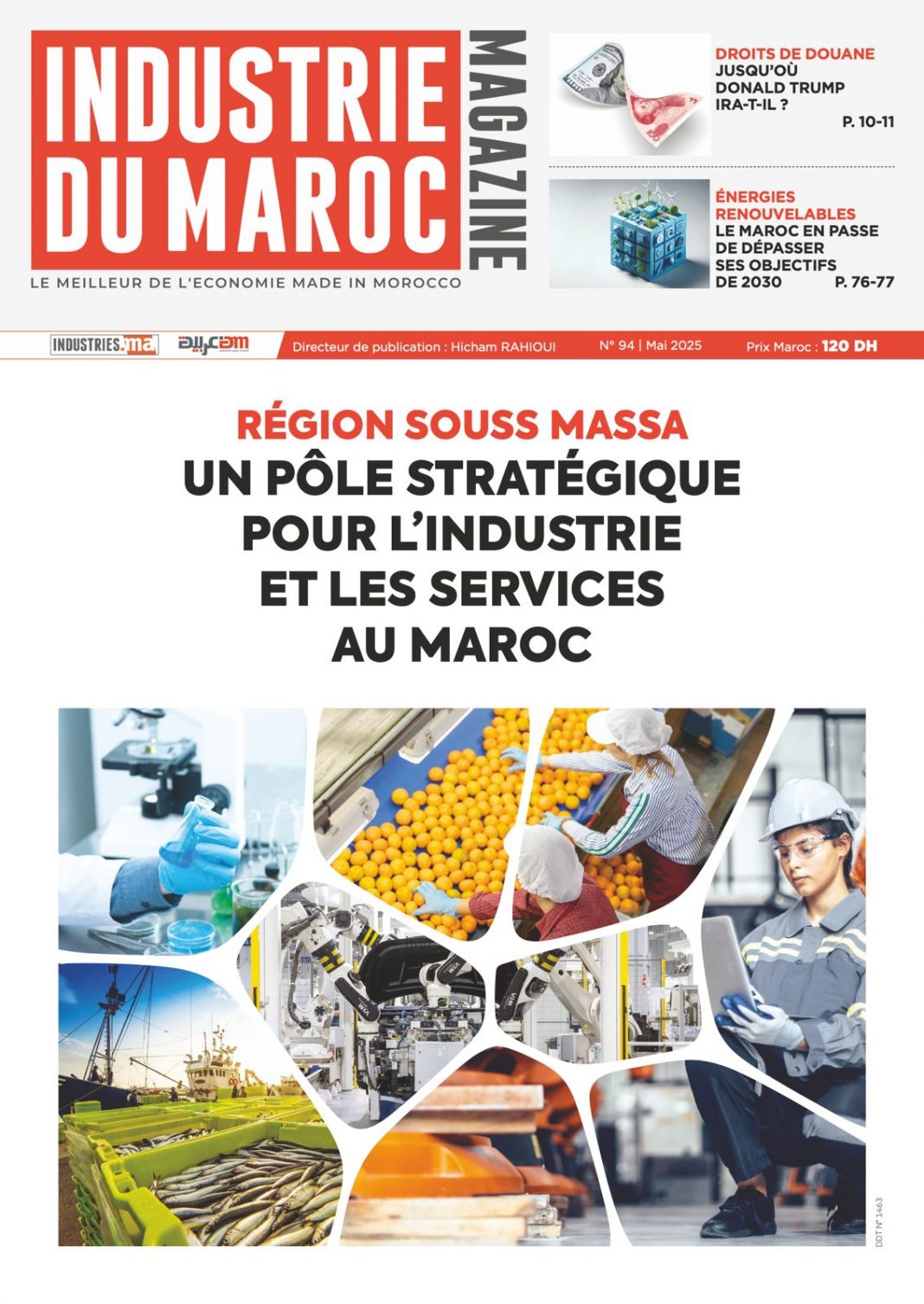To better understand the stakes of this ambitious project and the role played by Switzerland, Industrie du Maroc Magazine brings you an exclusive interview with Ms. Françoise Salamé Guex, Head of Economic and Development Cooperation at the Embassy of Switzerland in Morocco.
Responsible for the strategic oversight of this initiative—implemented in partnership with the International Trade Centre (ITC) and the World Customs Organization (WCO)—Ms. Françoise Salamé Guex shares insights into Switzerland’s cooperation approach, the project’s concrete objectives, and the broader prospects of this digital transformation in Moroccan customs.
- Question 1. Can you briefly explain the main objectives of the AI integration project in Moroccan customs risk analysis, and how it aligns with Switzerland’s approach to digital development cooperation?
The SECO-WCO Global Trade Facilitation Program (GTFP), a joint initiative by SECO and the World Customs Organization (WCO), aims to enhance partner countries’ customs compliance with international standards and strengthen the organizational and technical capacity of Morocco’s customs administration. The Program is in its second phase (GTFP II)
The one-year pilot in Morocco focuses on using Artificial Intelligence (AI) and Machine Learning (ML) to improve risk management and facilitate trade by accelerating border procedures. These technologies help process large volumes of border data and are increasingly applied in customs for revenue collection, goods classification, compliance, and automation tools like chatbots.
The GTFP II program in Morocco is fully in line with the strategic priorities of Swiss economic cooperation in Morocco, which focuses on competitiveness and employment. The security of trade in goods is essential for competitiveness: it reduces uncertainty, speeds up logistics and strengthens business confidence.
- Question 2. What has been the role of the Swiss Embassy and the ITC in designing and supporting the implementation of this project?
The GTFP II has spearheaded a collaborative initiative tailored specifically to Morocco. The WCO, in close collaboration with Swiss embassy in Morocco and the Kingdom of Morocco’s Customs and Excise Administration (known by its French acronym, ADII), has crafted the country-specific project to reflect Morocco’s unique trade priorities and strategic objectives.
- Question 3. How does the use of artificial intelligence enhance the accuracy and efficiency of customs risk management compared to traditional methods?
The integration of big data, data analytics, artificial intelligence (AI), and machine learning (ML) is rapidly transforming customs and border operations, emerging as a powerful driver of global trade facilitation. With the constant movement of goods and people across international frontiers generating immense streams of data, these technologies are enabling authorities to process and interpret information on an unprecedented scale. By identifying trends, detecting anomalies, and predicting patterns—often with greater accuracy than human analysis—AI and ML are paving the way for more efficient and secure border controls, ultimately accelerating the flow of commerce worldwide.
- Question 4. What specific benefits is this project expected to bring to Morocco’s trade facilitation efforts, especially in terms of security, transparency, and competitiveness?
As part of the Global Trade Facilitation Programme Phase (GTFP II), Morocco is advancing its use of data analytics, predictive modeling, and artificial intelligence to enhance customs oversight. Building on previous efforts, the initiative aims to identify suspicious transactions, streamline inspections, and anticipate threats.
Improved risk management is at the heart of this push, enabling customs authorities to focus resources on high-risk shipments while speeding up clearance for low-risk goods. The result: strengthened border security, faster trade flows, and more efficient revenue collection.
- Question 5. How is capacity building for Moroccan customs officials being addressed within this initiative, particularly regarding AI tools and data analysis?
Morocco’s customs modernization efforts under GTFP II will be guided by the World Customs Organization’s (WCO) reform methodology, which emphasizes national ownership and effective implementation. At the core of the strategy is a focus on data analytics, seen as the foundation for adopting advanced technologies like artificial intelligence.
To support this transition, the WCO will equip Morocco’s Customs and Excise Administration (ADII) with technical assistance and tools—including the “Handbook on Data Analysis” and the “Capacity Building Framework for Data Analytics.” These resources provide practical guidance on big data, data governance, and the application of AI and machine learning, particularly in unsupervised models for cargo risk management.
The program will also foster peer learning through exchanges with other customs authorities, helping shape ADII’s roadmap for embedding AI into its risk management systems.
- Question 6. In your view, how could this project serve as a model for other countries in the region looking to modernize their customs systems through digital innovation?
Morocco is advancing efforts to modernize its customs system by enhancing data analytics capabilities and applying non-supervised machine learning to cargo risk management. This push aligns with World Customs Organization (WCO) guidance and leverages key instruments and tools to support implementation.
The initiative also reflects Morocco’s commitment to Article 7.4 of the WTO Trade Facilitation Agreement, which calls on member states to adopt risk management practices that focus inspections on high-risk consignments while expediting low-risk goods.
Through these digital innovations, the Moroccan Customs and Excise Administration aims to streamline operations, strengthen trade security, and position Morocco as a regional model for smart, tech-enabled border control.









